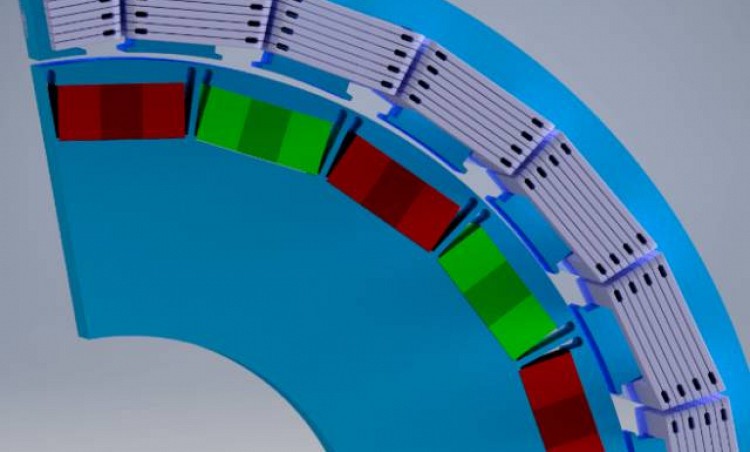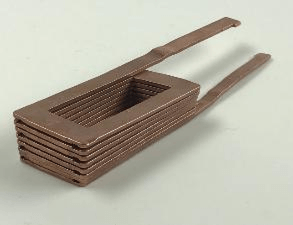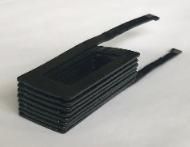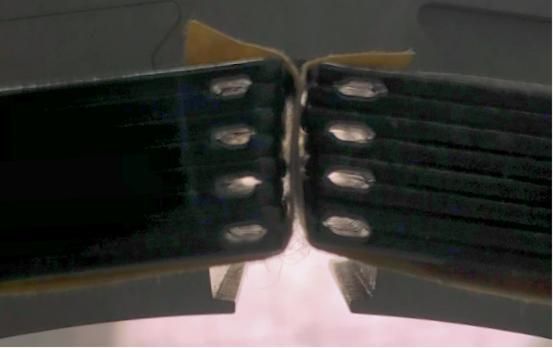
This summary records the results of the IGF project no. 19578 N „Electric Drives with Extreme Torque Density“, government-funded by the AiF as part of the program for the promotion of industrial corporate research (IGF) of the federal ministry of economy and energy due to a resolution of the German Bundestag.
The project focus was to design, to manufacture and to test a prototype electrical machine using a simple but effective direct liquid cooling of the conductors of the stator winding in a permanent magnet synchronous machine (PMSM) in order to achieve a significantly higher torque density than state-of-the-art motors. Moreover, design rules for such machines should be identified, as the high current density that is permissible due to the direct liquid cooling doesn’t allow designing the machine according to the conventional rules, e. g. for split ratio, slot dimensions, PM geometry, etc.
The basis of the prototype motor were “High Torque”-motors of industrial partners, which defined the geometrical constraints. The focus of the project was the increase of torque density without a major loss in efficiency and with a simple configuration of the cooling system. In question was, whether an increase in current density is only suitable within a certain range and whether or not it is possible to reach or exceed the torque density of hydraulic motors with. A systematic variation of the geometric as well as the electrical parameters lead to the final electric and magnetic design of the prototype. In addition, the design process yielded extensive insights about how to dimension permanent magnet synchronous machines with very high current density and direct liquid cooling.
The following four fundamental rules of design were found:
In addition to these fundamental rules of design, a computationally efficient analytical method for the calculation of geometric key parameters and the torque of a highly saturated PMSM was developed which requires just a few input parameters. It was shown by comparison with the results of parametric optimization studies based on FEM that the analytical method leads to first estimates for the geometry which are quite close to the results of the parametric optimization studies. Hence, many variations can be calculated very fast with the new analytical method.

Figure 1: 3D-model of the prototype design
The active part of the actually designed prototype is shown in Figure 1. The machine has an outer stator diameter of 282.5 mm, an axial length of 42mm and it generates a torque of 318 Nm at a current density of 60 .
.
Due to the direct liquid cooling of each conductor of the concentrated stator winding, this high current density is permissible at continuous operation without exceeding the winding’s temperature limit of 155 °C. The manufactured prototype uses the design guidelines. Furthermore, it confirms the results of the calculations and is a good basis for future developments and enhancements for companies. The prototype machine achieves more than five times the torque density as the basic state-of-the-art “high-torque”-motor.
The implemented casted coils, which enable the direct liquid cooling, can be seen in Figures 2 to 4. The high current density as well as the – compared to standard motors – higher eddy current losses and thus higher operating temperatures of the PM lead to choosing samarium-cobalt magnets. Those magnets possess a high remanence flux density as well as a high resilience against partial demagnetizations at high temperatures.
In addition to the design rules discussed above, the following noteworthy effects occurred and are to be considered when designing a PMSM for high torque density and thus high current density or operating it:
 can change from negative to positive with increasing current density.
can change from negative to positive with increasing current density. can reach values of over 10 % of the inductances of d-axis and q-axis.
can reach values of over 10 % of the inductances of d-axis and q-axis.The achieved increase in torque density and the first comparison to hydraulic systems show that a substitution of hydraulic motors is possible in the future. Moreover, the developed methods and insights of this project are not limited to electric machines for the substitution of hydraulic motors, but can be used for other fields of application like aviation or large direct drives as well. Hence new application areas for electrical machines can be unlocked. In addition, the simple but in comparison to conventional cooling methods more effective direct liquid cooling can lead to lower operating temperatures for many highly utilized electric machines and hence to increased efficiency of the drive system.

Figure 2: Raw casted coil made of copper

Figure 3: Coated coil

Figure 4: Cooling channels in each turn of the coils
About the Author:
 Constantin Wohlers was born in Gehrden, Germany, in August 1990. After finishing his studies with a masters degree in industrial engineering at Leibniz University Hannover in 2015, he started working as a research associate at the Institute for Drive Systems and Power Electronics in Hannover. His master thesis was awarded with the Ernst-Blickle Graduate Award 2015
Constantin Wohlers was born in Gehrden, Germany, in August 1990. After finishing his studies with a masters degree in industrial engineering at Leibniz University Hannover in 2015, he started working as a research associate at the Institute for Drive Systems and Power Electronics in Hannover. His master thesis was awarded with the Ernst-Blickle Graduate Award 2015
World Media Group (WMG) Haber Servisi
 Industry News (English)
Industry News (English)
 Industry News (English)
Industry News (English)
 Industry News (English)
Industry News (English)